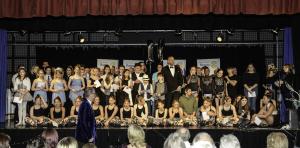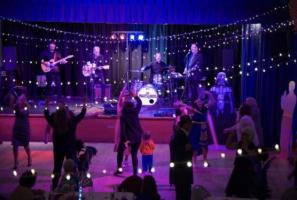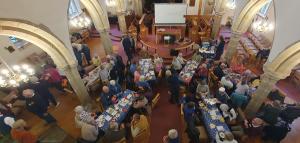Club Meeting at The Horse and Plough, Bingham
Thu, Apr 21st 2022 at 7:00 pm - 9:00 pm
John Whitfield - Nottingham Industry since 1900
Club members please log in for more information.
21st April 2022 “Nottingham’s Industrial History” – John Whitfield
John began his talk with the Framework Knitting industry from 1700 to 1840 but almost ten years on from the 1812 ‘Declaration of the Framework knitters’, conditions for the framework knitters of the counties of Nottingham, Derby and Leicester had not seen any sign of improving. The pay for these workers, of whom there were estimated to be about 15,000 in these three counties, was insufficient to keep them in daily bread.
The Lace Market is believed to be the oldest part of the city of Nottingham, dating back to the fifth century. It got its name from the invention of the knitting frame by William Lee of Calverton, Nottinghamshire.
Pre-dating the arrival of the Normans, the Lace Market was the Saxon area of Nottingham. This is apparent from existing place names as the word ‘Gate’ arose from the Danish ‘gata’ meaning street. A Norman area of the town - centred around the castle - emerged following the Norman Conquest, and it was then that the city became merged. The invention of the knitting frame by William Lee radically changed the area and eventually gave the Lace Market its name. Richard Arkwright established a small cotton mill in Hockley in 1768 and this led to the development of back to back housing for mill workers. Lace was manufactured on a frame adapted from that of William Lee and was further improved by John Heathcote and John Levers in the early 19 century. By the 1840s lace making was changing from a domestic industry into an international export.
It was during the 19th century that Nottingham’s reputation as a textile town was formed. Lace-making was already popular in the area but the introduction of a lace making machine in 1809 ensured that lace would make not only a reputation for the town, but also make it a fortune.
Nottingham's population doubled between 1750 and 1800, and the major reason was the migration of workers and their families into the city looking for work in the textiles industry, which was dominated by hosiery. From the early 19th century, hosiery manufacture began to decline, in part because men's stockings fell out of fashion in favour of trousers.
Coal gas was introduced in Nottinghamshire by the Nottingham Gas Light and Coke Company in 1821. Nottingham was the first place in Britain to install high pressure constant supply mains water in 1831. This system was deployed by engineer Thomas Hawksley and the Trent Waterworks Company.
Coal has been mined in Nottinghamshire for many centuries, but for a long time this was simply surface mining. Coal was probably mined around Cossall and Selston in the 1270s. Certainly mining was taking place on a significant scale at Selston in the reign of Edward I. Mining at Cossall is again documented in the mid-14th Century. By the 17th century coal mining was one of the most important industries in Nottinghamshire with new mines opened in the Hucknall area. Most coal was sold locally to domestic consumers, but efforts were made from the 1700’s to use coal to drive industry.
The idea of mining deeper, sinking shafts, making drains, and using timber for props, gradually gained acceptance, including the use of the sough – a method of gravity draining. In part, this was encouraged in the Selston area by a ready demand for coal from Nottingham by the 15th century.
Other major industries include Boots who opened their first shop on Goosegate in 1840, with a manufacturing base developing alongside with employment of 14500.
Raleigh was founded in 1888 when Sir Frank Bowden bought an interest in a small bicycle shop on Raleigh Street and by 1892 Raleigh led the World Bicycle racing field.
Then, of course there was John Players tobacco and cigarette manufacturers based in Nottingham that merged with others to form The Imperial Tobacco Company
Clive thanked John for his very informative and interesting presentation and asked the audience to show their appreciation in the normal manner. AR
'What We Do' Main Pages:

We have now successfully run this event for 10 years. Full reports of each year are available under this main page
more
It's here that you can read what we've been up to in the last few months. For more information on our work in the local community, with our young people and internationally please access "what we do" section of this web site.
more
This is a monthly meeting open to visitors from Bingham, Radcliffe, Cotgrave and all villages in surrounding area.
moreThis committee are involved in planning now we can raise funds for our chosen charities
moreIf you like what we do as an organisation and are interested in volunteering with us, keeping up to date with our plans and future events then why not consider signing up as a friend of our Rotary Club
moreOur International Committee is involved with Polio Plus - a Rotary initiative to eradicate Polio, World-wide; Sand dams; Aqua Boxes; Shelter Boxes; Collecting used spectacles, and many other projects
moreHere you can read about the many meetings we've had during our formation as a Rotary Club. The early years are a little short on detail...
more


